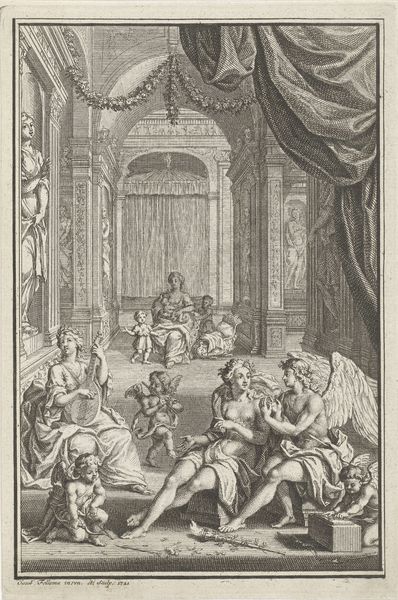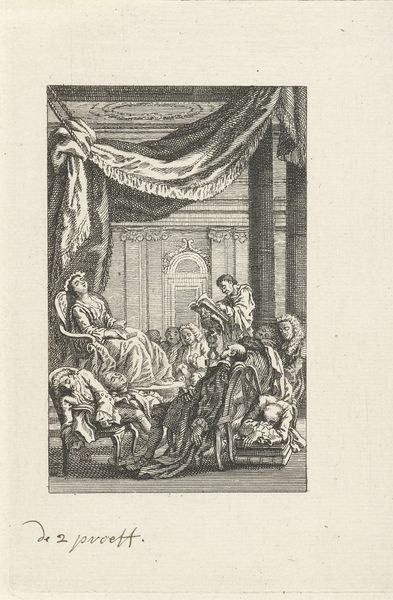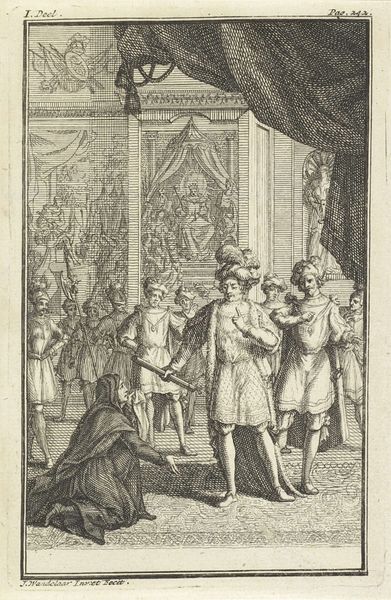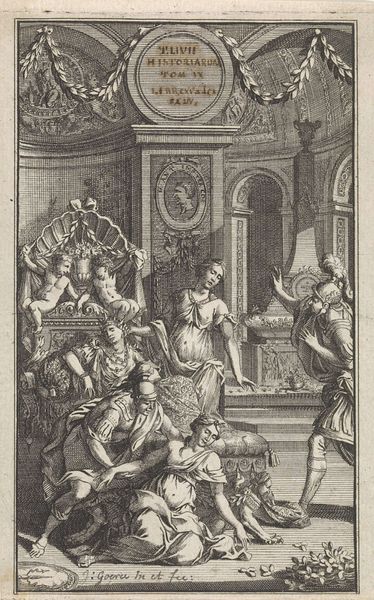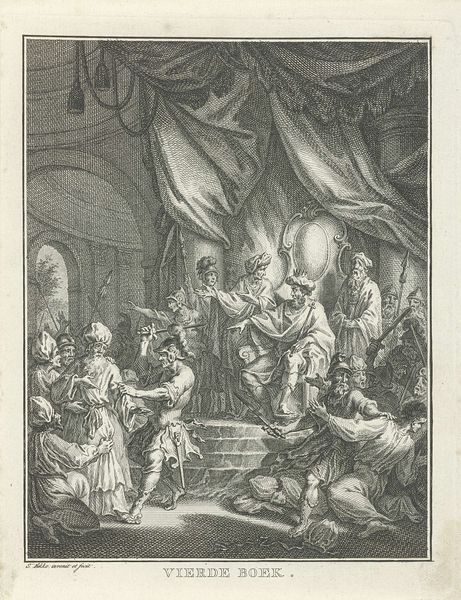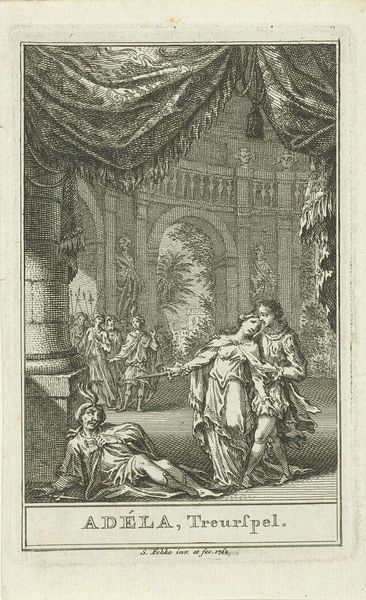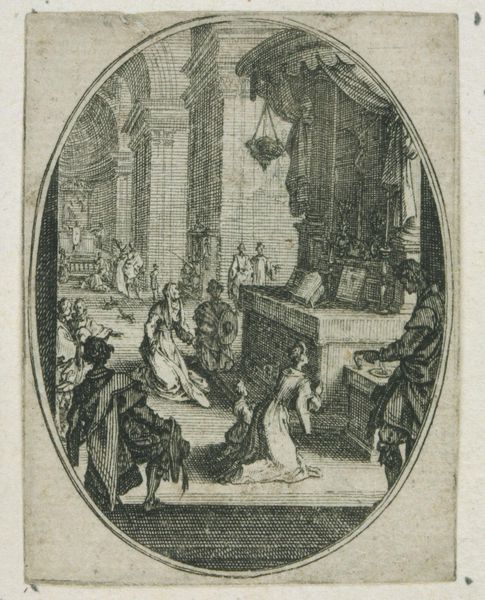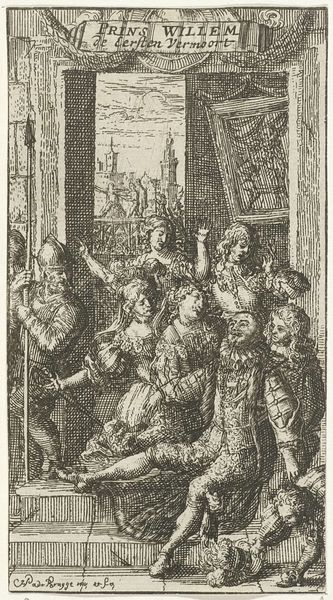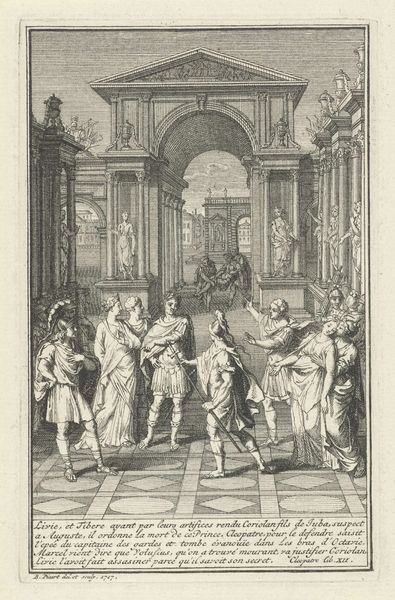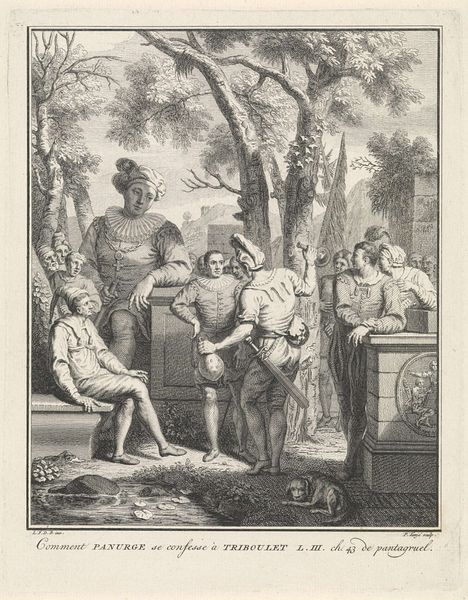
engraving
#
portrait
#
baroque
#
old engraving style
#
history-painting
#
engraving
Dimensions: height 193 mm, width 143 mm
Copyright: Rijks Museum: Open Domain
Curator: The scene unfolding before us is a marvel of historical detail, crafted in 1676 by Herman Padtbrugge. It's an engraving entitled "Vasco da Gama op audiëntie bij koning van Calcutta," depicting Vasco da Gama's audience with the King of Calcutta. Editor: My initial sense is one of overwhelming...pattern! Every surface seems to be crawling with intricate designs. The effect, though historically accurate I'm sure, is almost claustrophobic. Curator: I see what you mean, it's an extremely busy composition. Formally speaking, Padtbrugge uses the detailed ornamentation—notice the textiles, the architectural elements—to convey a sense of exotic opulence, which was often how the West represented the East. Consider how he uses line—delicate, precise, and almost relentlessly detailed—to delineate every aspect of the scene. The perspective leads us right into the heart of the King’s chamber and the formal introduction unfolding before him. Editor: It’s interesting how much of the story is being told through posture. Da Gama, being carried in—a sign of respect or weakness? And the King, perched on his throne, exuding an almost bored detachment. What's your emotional take on the work? Curator: I find it unsettling. There’s this veneer of civility masking, perhaps, deeper cultural misunderstandings and colonial ambitions. The body language you've observed reinforces this reading. The fact that Da Gama is carried towards the King indicates his ailing health, thus illustrating the high costs and extreme efforts undertaken during such voyages. But the faces are quite generalized, masking their true intentions, at least from our eye. Editor: Do you think that ambiguity was intentional? Curator: Most definitely! The baroque loved theatricality and moral complexities. I feel it is about the artist suggesting how appearances could both reveal and obscure realities. Editor: It's a fascinating slice of history, captured through a lens that, while visually rich, carries its own set of biases. Makes you think about the stories that art doesn't—or perhaps, can't—tell. Curator: Precisely. We’ve peeled back a few layers of this intricate artwork, recognizing that its visual grandeur holds not only an event, but also an era’s perspective and unspoken narrative threads.
Comments
No comments
Be the first to comment and join the conversation on the ultimate creative platform.
